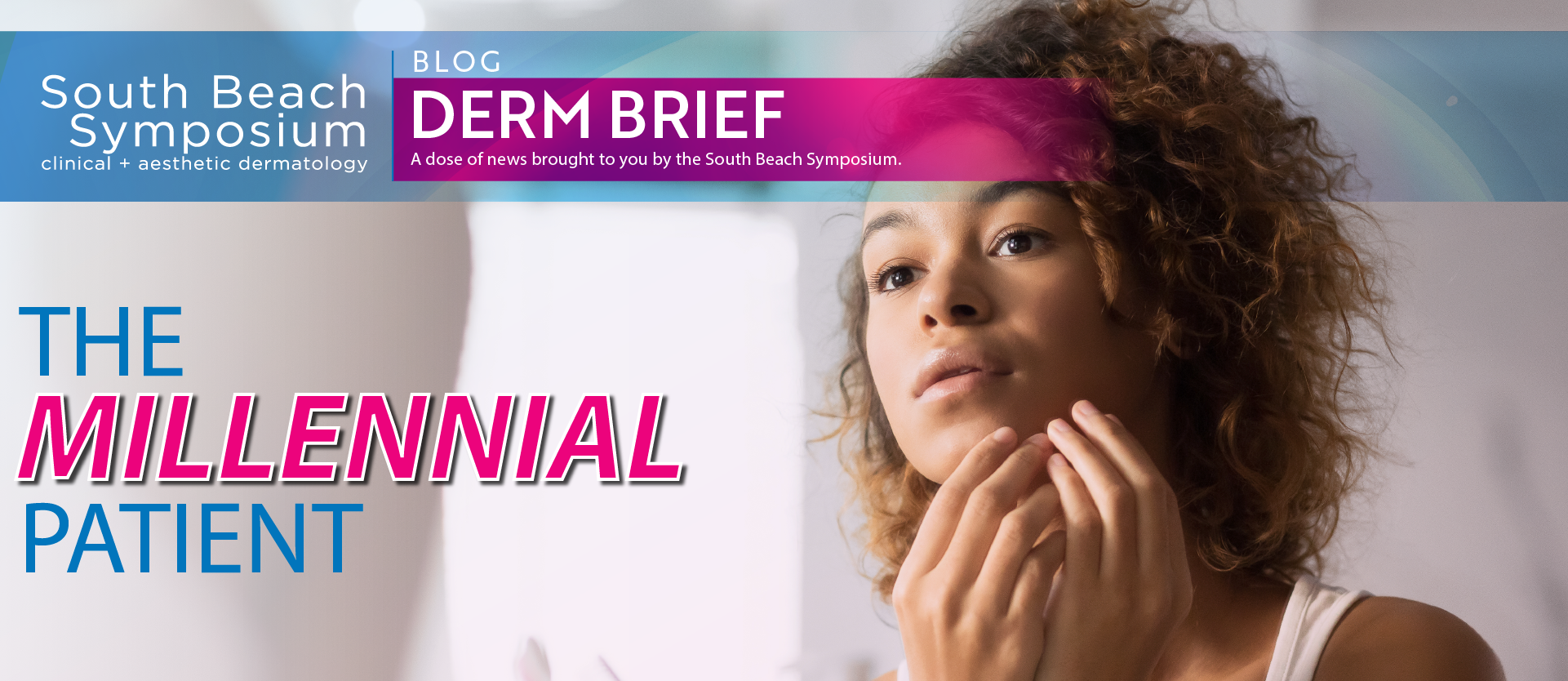Changes in the consumer landscape reveal that Millennials are a growing portion of the dermatologic patient base. Born between 1981 and 1996, Millennials are currently the largest generation in U.S. history – accounting for 83.1 million of the population – and not only have high spending power but also an increased awareness cosmetic procedures afforded by their digital engagement. Together, the demographic spends approximately $600 billion per year, with that number projected to increase to $1.4 trillion by the end of this year.
The Millennial affinity to trend-watching contributes to their growth toward being the largest patient base; they are interested in all facets of aesthetic medicine and are largely responsible for shifting attitudes toward cosmetic procedures as well as immense increases in their prevalence in recent years.
In light of these shifting demographics, the aesthetic medicine practice needs to evolve to meet changing consumer needs and demands. Understanding the patient base – their behavior and concerns – is critical to enhancing the relationship with the Millennial patient base, which will comprise the majority of patients in forthcoming years.
Targeting Digital Natives
It is as important as ever for physicians and clinical practices to maintain a strong online presence, as the millennial demographic sources most of its information from the internet and social media. No longer does the majority of patients cite brand name as a deciding factor in purchases – Millennials are less likely to trust in the brand or reputation of a product and more likely to inform their decision based on their own online research. This patient group will come to consultations prepared, having investigated a treatment or product in-depth prior to their appointment. Anticipating questions can help establish trust and demonstrate experience, while providing professional medical knowledge to quell any misconceptions.
Millennials spend the vast majority of their time on social media. A genuine, strong social media presence can help make a practice stand out and connect with this group. Increasingly, aesthetic medicine practitioners are turning to social media to engage with Millennials by posting before-and-after content, interacting with their followers, sharing valuable knowledge and information. Placing an emphasis on developing and maintaining an online presence can make a significant impact on the popularity of a practice and its physicians.
Following Trends
As Ava Shamban, M.D., CEO of Skin Five in Los Angeles tells Dermatology Times, “Millennial trends are huge in dermatology.” The prevalence of social media helps disseminate information quickly and fuel trends. By observing their peers, the demographic learns about treatment options, skincare regimens, and the vast range of available procedures for their skin concerns. “The millennial population is much more savvy with what’s available to them,” Dr. Shamban says. “…they see on social media that this can be treated.” As such, it is important for clinicians to stay abreast the currently trending products and services the Millennial patient may be searching for and incorporating them into their offering.
Offering Variety
Millennials value a diverse product and service offering; a greater understanding of their concerns and behaviors can shed light on the types of procedures this group is most interested in. As these patients view aesthetic treatments as they do any other beauty appointments, there is considerable potential interest in a variety of products and procedures – especially those that are minimally or non-invasive. While dermal filler injections are one of the most common procedures in this demographic, body treatments, such as non-invasive body contouring, are also in high demand.
However, the list does not end there. Dr. Shamban underscores that physicians “shouldn’t be afraid to discuss the entire palette of offerings that we have to help treat things.” Even the smallest imperfections and skin concerns can bother this demographic, she highlights. Suggested treatment plans should present a comprehensive offering, aimed at targeting a wide range of proposed products and procedures, particularly those with an anti-aging indication.
“Even if it’s just a light spot or a tiny little wrinkle, these concerns should be addressed because it’s very important to everyone’s self-esteem and confidence as they go through their lives,” she explains. This includes discussing preventative procedures and practices, such as chemical peels, micro-needling, and laser therapies.
Creating Experiences
More than three-quarters of the Millennial population would rather spend money on an experience than a physical good; they have created what has been deemed an “experience economy” which prioritizes the experience products provide rather than the products themselves.
As Noëlle S. Sherber, M.D., FAAD, clinical assistant professor at George Washington University explains in a recent article, this translates to a demand for a practice “which incorporates aesthetic or wellness services, hosting exclusive events or having opportunities available only to your patients develops a sense of community.”
Dr. Sherber recommends practices with a retail component place a premium on highly trained staff who engage with patients, providing a high-touch experience with a focus on personalization. “From a design perspective, a retail space that gives an enveloping experience without a generic clinical feeling also favors the feeling that the purchase process itself is a wellness moment of health education and self care,” she writes. Therefore, it is important for aesthetic medicine practices to incorporate an experiential component to engage audiences and attract future patients.
In light of the boom in millennials seeking aesthetic procedures, the aesthetic medicine patient base is changing to one that is educated, aware, technologically savvy, and demanding. The ability to fulfill this demand depends on practitioners’ understanding of the demographic’s spending habits, attitudes, and the trends guiding their behavior. By bringing the clinical practice online, engaging with future customers, monitoring trends, and offering a variety of products, services, and experiences, medical professionals can work to strategically enhance their relationship with the Millennial patient for years to come.

















